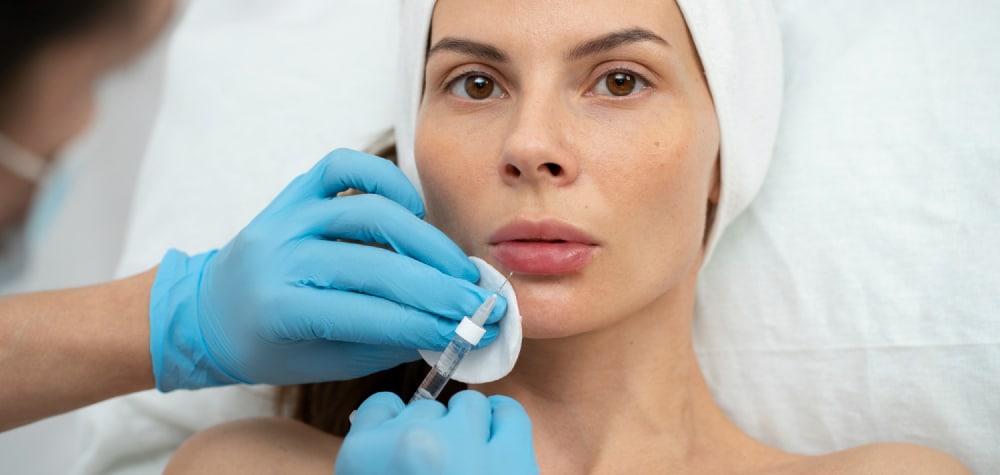
Lip augmentation with fillers has become one of the most popular non-surgical cosmetic procedures worldwide. The primary goal of dermal lip fillers is to enhance volume and elasticity while smoothing out wrinkles.
This versatile treatment can eliminate asymmetry, define lip contours, make lips plumper, and elevate drooping corners. With modern fillers based on collagen, hyaluronic acid, and calcium, patients can achieve their desired lip shape and volume in less than an hour, enjoying effects that last from six months to three years. However, as with any cosmetic procedure, there are potential risks, including the possibility of lip filler migration.
Understanding the causes, prevention, and management of lip filler migration is crucial for both practitioners and patients to ensure optimal outcomes.
Lip augmentation with fillers is one of the most popular non-surgical procedures worldwide. The primary goal of dermal lip fillers is to add volume and elasticity while smoothing out wrinkles. Fillers help eliminate asymmetry, align lip contours, make lips plumper, and raise drooping corners.
Modern fillers are primarily based on collagen, hyaluronic acid, and calcium, giving the lips the desired shape and volume in less than an hour after injection. Depending on the chosen filler, the effects can last from six months to three years.
Permanent Fillers:
Permanent fillers were more common when aesthetic injection procedures first became popular. These fillers, made from synthetic materials like biopolymer and polyacrylamide gels, do not dissolve naturally and can lead to side effects such as uneven absorption and lump formation. Over time, these lumps can become integrated into the tissue, making them difficult to remove without surgery, which can leave scars.
Biodegradable Fillers:
Biodegradable fillers, often made from stabilized hyaluronic acid, are used to increase and moisturize the lips. Hyaluronic acid is a natural moisturizer found in human tissues, and its production decreases with age. Introducing hyaluronic acid fillers improves the lips’ condition and makes them plumper. While collagen fillers are quickly eliminated by the body, they stimulate natural collagen production, leading to long-term skin improvement.
Understanding Lip Filler Migration:
Lip filler migration is a condition where the filler gel moves from the injection site, creating unnatural volumes and reliefs. While not harmful, it can cause unexpected results that may concern patients. Fortunately, lip filler migration is not permanent and can be managed.
Incorrect Administration: Migration often occurs due to improper injection techniques or overcorrection. Injecting too much filler can stretch the lips beyond their natural capacity, causing the filler to migrate.
Superimposition: Filler may migrate if it is layered on top of previous filler, leaving it nowhere to go but to neighboring areas.
Superficial Injections: Injecting filler too superficially or too quickly can lead to it entering the wrong tissue layer.
Inappropriate Filler Selection: Different fillers have specific uses, and using a thick gel in a delicate area can lead to migration.
Immune Response: In rare cases, the immune system’s response to illness or an allergic reaction can cause migration.
Signs of Migration:
Signs include unnatural volume, swelling, lumpiness, and difficulty closing the lips. Migrated filler can cause the upper border of the lips to become less defined and bumps to form above the lips.
Prevention and Management:
Treatment Options:
Lip filler migration is a potential risk associated with lip augmentation procedures. Minimizing this risk involves selecting appropriate candidates, choosing the right filler, using correct injection techniques, and providing clear post-treatment instructions. In case of migration, various treatment options, such as hyaluronidase, steroids, massage, and cold compresses, can help manage the issue. By prioritizing patient safety and satisfaction, practitioners can ensure natural-looking, satisfying outcomes from lip augmentation procedures.
Join our newsletter to receive latest news and offers

Medicle MD Ltd
Reg. Number: 14317237
Address: 27 Old Gloucester Street,
WC1N 3AX London,
United Kingdom